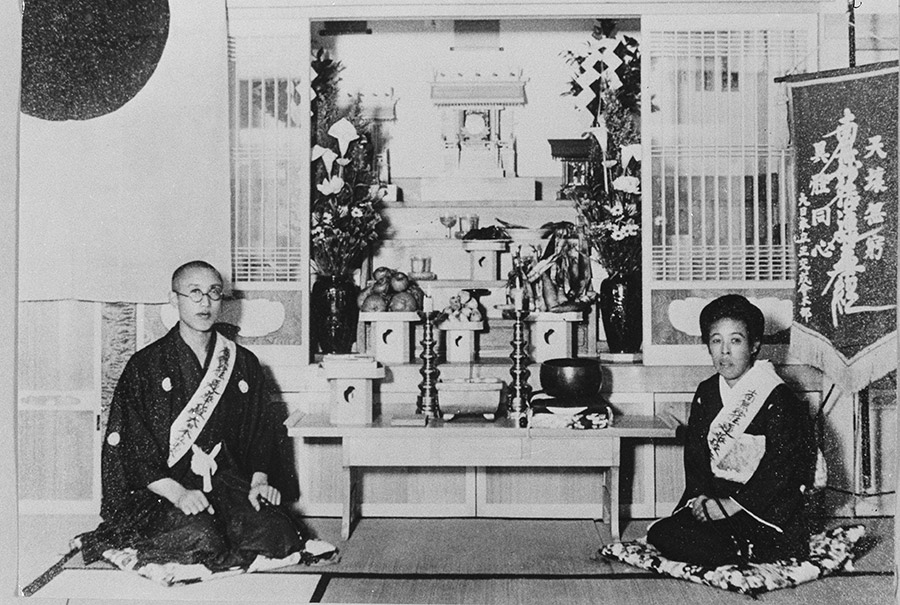The Sutra of the Lotus Flower of the Wondrous Dharma, popularly known as the Lotus Sutra, is revered by millions of Buddhists as containing the core and culmination of the Buddha’s teaching. Together with the two shorter sutras that traditionally accompany it, Innumerable Meanings and the Method for Contemplating the Bodhisattva Universal Sage, it is one of the most important scriptures of Mahayana Buddhism and one of the major documents of world religion.
The Lotus Sutra consists of a series of sermons delivered by the Buddha before a great multitude of disciples and countless others toward the end of his 45-year teaching ministry. The setting and scope are cosmic, but the sermons themselves, presented in both prose and verse, are replete with parables and graphic anecdotes.
At the heart of the sutra are three major concepts of Mahayana Buddhism:
- All living beings can attain perfect enlightenment or buddhahood and this is the common and ultimate final goal of practitioners.
- The Buddha is eternal, having existed from the infinite past and appearing in many forms throughout the ages to guide and assist living beings through the teaching of the Wondrous Dharma.
- The noblest form of Buddhist practice is the way of the bodhisattvas, those who devote themselves to attaining Supreme Perfect Awakening not only for themselves but for all living beings.
The Sutra of Innumerable Meanings records the sermon proclaimed by the Buddha to a host of bodhisattvas immediately before the delivery of the Lotus Sutra. Traditionally known as the “opening sutra” it is a shorter scripture. The Sutra of the Method for Contemplating the Bodhisattva Universal Sage, said to have been delivered after the Lotus Sutra, establishes acknowledgement and remorse as the primary way to practise the spirit of the Lotus Sutra. As an epilogue to the main scripture, it is called the “closing sutra”.
The Lotus Sutra, along with the opening and closing sutras, is traditionally called the Threefold Lotus Sutra. For RK members it is the number one scripture that defines our faith. Throughout the Lotus Sutra, the spirit of the One Vehicle is manifested (a spirit of inclusiveness, which means that all people in the world are liberated and can live together). And so the Lotus Sutra can lead all humanity from division to unity, from discord to harmony, and from conflict to peace.
Read more about the Lotus Sutra here.

The Lotus Sutra appeared to be difficult and was only studied by a limited number of people and by religious scholars. RK Founder Nikkyo Niwano (1906-1999) had a wish that the Lotus Sutra would be appreciated and understood by all people and it would permeate people’s daily lives.
On 5 March 1938, together with the co-founder and 30 other people, Rev Niwano started RK out of his earnest desire to truly liberate people from suffering and change the world for the better. For over 60 years, the founder has communicated the teachings in a clear way that led people to an altruistic way of life and inner peace.
He is an author of many English-language books about Buddhism, including Buddhism for Today: A Modern Interpretation of the Threefold Lotus Sutra, A Guide to the Threefold Lotus Sutra, Buddhism for Everyday Life, Invisible Eyelashes, A Buddhist Approach to Peace, Lifetime Beginner and Shakyamuni Buddha: A Narrative Biography. To find out more, please go here.
Wishing for world peace, he paved the way for interreligious cooperation so that different religions could join together in dialogue and action. He dedicated himself to the establishment of Religions for Peace (RfP, formerly the World Conference of Religions for Peace) and presided at the opening session of its Sixth World Assembly with Pope John Paul II in the Vatican’s Synod Hall. In the past three United Nations Special Sessions on Disarmament (SSD), he called for world political leaders to take steps for the abolition of nuclear weapons. In 1979 he was awarded the Templeton Foundation Prize for Progress in Religion. In 1992 he was made Knight Commander with the Silver Star of the Order of St. Gregory the Great by the Vatican. In 1993 he received the Interfaith Medallion from the International Council of Christians and Jews.
Co-founder Myoko Naganuma (1889-1957) practised the teaching of the Lotus Sutra and dedicated herself as a witness to the Lotus Sutra under the guidance of the founder. Even in the chaotic turmoil during and after World War II, Co-founder Naganuma led a life dedicated to always practising the teachings of the Lotus Sutra thoroughly, so demonstrating the importance of rendering service to others through the bodhisattva way, no matter what circumstances you are facing. The deep compassion she demonstrated in her attitudes and behaviour were a great inspiration for RK’s founding members and helped them develop firm faith in their hearts and minds.